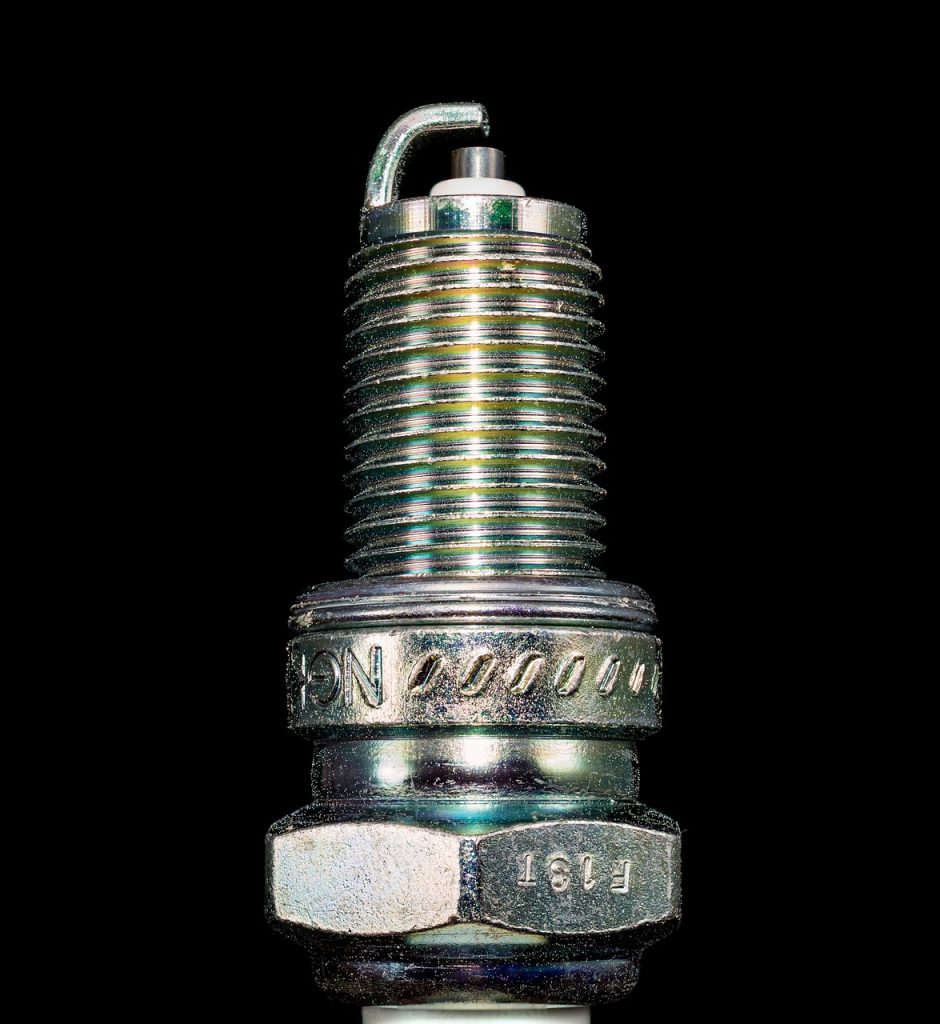Internal combustion engines consist of a large number of components, all working together in harmony to create a fully functioning machine. One of the key functions within the engine is the ignition process. This is a fundamental step that initiates the controlled explosion of fuel and air mixture and gets your engine started. There are two critical elements in this ignition process, namely spark plug wires and ignition coils. In this article, we will take a closer look at these two components and discuss their distinct roles and characteristics.
Whilst both of these parts play important roles in the functionality of your engine, they serve different functions related to the ignition.
Spark Plug Wires
Let’s begin with spark plug wires. These wires might appear simple at first glance but they are responsible for channeling the electrical energy needed to ignite the air-fuel mixture in your engine’s cylinders.
Spark plug wires are also known as ignition cables or high-tension leads and are slender conductive cables tasked with the crucial mission of transmitting electrical energy from the ignition coil to the spark plugs. Their primary function is to deliver a high-voltage electrical charge to the spark plugs at precise moments. This triggers the spark that ignites the air-fuel mixture in the combustion chamber.
Spark plug wires look rather simple in design, typically consisting of a core conductor, insulation, and a durable outer jacket. The core conductor is usually made of conductive materials like copper or stainless steel, known for their excellent electrical conductivity. The core is surrounded by insulating materials, such as silicone or EPDM rubber. The insulating materials prevent electrical leakage and protect against external elements like heat and moisture. The outer jacket provides an additional layer of protection and durability.
Spark plug wires are the conduit through which the electrical energy generated by the ignition coil is transported to the spark plugs. This electrical charge is often in the tens of thousands of volts. It arcs across the spark plug’s electrode and creates the spark that initiates the combustion process. The correct timing of this spark is essential for engine performance because it determines when each cylinder fires and the power stroke begins.
Spark plug wires come in various lengths and thicknesses which are designed to cater to the specific requirements of different engine designs. The choice of materials for the core conductor and insulation affects their performance and longevity. Spark plug wires must exhibit resistance to electrical interference and heat to ensure reliable ignition under various conditions.
Ignition Coils
Let’s move on to the heart of the ignition system: the ignition coils. These devices are responsible for transforming a low-voltage electrical signal into a high-voltage surge.
But what exactly are ignition coils and why are they important to the ignition process? Ignition coils are often referred to as coil packs or ignition transformers. They are electrical transformers designed to take the low-voltage electricity supplied by your vehicle’s battery and convert it into a high-voltage output. This high-voltage output is what creates the powerful spark needed to ignite the air-fuel mixture in your engine’s combustion chambers.
Ignition coils come in several varieties which are each tailored to different engine configurations and designs. These include Coil-on-Plug (COP) systems, Distributor Coils, and Coil Packs. Coil-on-Plug systems feature individual coils for each spark plug, Distributor Coils are commonly found in older vehicles and distribute voltage to spark plugs through a distributor cap. Coil Packs house multiple coils in a single unit, usually used in engines with fewer cylinders.
The primary function of ignition coils is to generate and amplify the electrical charge to create a spark at the spark plugs. This process occurs in two stages: the primary winding and the secondary winding. When the primary winding receives a low-voltage electrical signal from the vehicle’s electronic control module (ECM), it generates a magnetic field. When this field collapses, it induces a high-voltage current in the secondary winding. This high-voltage output is then sent to the spark plugs to initiate combustion.
The primary and secondary windings within the coil have specific winding ratios that influence the voltage output. The core material of the coil also plays an important role in its performance. Ferrous materials are often used to enhance magnetic properties.
Differences Between Spark Plug Wires and Coils
Now that we’ve acquainted ourselves with the roles and intricacies of spark plug wires and ignition coils, it’s time to explore the key differences that set these two components apart. While they work together within your vehicle’s ignition system, their functions, construction, and impact on engine performance vary significantly.
Function and Role in the Ignition System
- Spark Plug Wires: Spark plug wires serve as conduits for transmitting electrical energy from the ignition coil to the spark plugs. Their primary role is to ensure the precise timing and delivery of the electrical charge to initiate combustion.
- Ignition Coils: Ignition coils, on the other hand, are responsible for transforming low-voltage electricity from the vehicle’s battery into a high-voltage surge. They are the ignition system’s energy transformers, crucial for generating the spark needed to ignite the air-fuel mixture.
Construction and Materials Used
- Spark Plug Wires: These wires are typically composed of a core conductor, insulation, and an outer jacket. Core conductors can be made of materials like copper or stainless steel, while the insulation and jacket materials are designed for electrical insulation and protection against environmental factors.
- Ignition Coils: Ignition coils consist of primary and secondary windings wound around a magnetic core. The core material, often ferrous, enhances magnetic properties, enabling efficient energy transformation. Unlike spark plug wires, coils are enclosed in a housing to protect their sensitive components.
Electrical Properties and Conductivity
- Spark Plug Wires: Spark plug wires have low resistance to electrical flow which ensures minimal energy loss during transmission. Their primary role is to convey the electrical charge, not to amplify it.
- Ignition Coils: In contrast, ignition coils are designed to step up the voltage dramatically. They take the low-voltage input and transform it into a high-voltage output, creating the powerful spark required for ignition.
Maintenance and Replacement Considerations
- Spark Plug Wires: These components are more prone to wear and tear over time, as they are exposed to heat, moisture, and vibration. Regular inspection and replacement at recommended intervals are essential to maintain optimal engine performance.
- Ignition Coils: Ignition coils are generally more durable and have a longer lifespan compared to spark plug wires. However, they can still fail due to overheating or electrical issues, necessitating replacement when faulty.
Impact on Engine Performance and Efficiency
- Spark Plug Wires: The condition of spark plug wires can influence engine performance, as damaged or worn wires may lead to misfires, reduced fuel efficiency, and poor acceleration.
- Ignition Coils: Faulty ignition coils can have a more significant impact on engine performance, potentially causing severe misfires, reduced power, and increased emissions.
Importance of Proper Maintenance
Proper maintenance is crucial for these components. The reliability and harmony of your vehicle’s ignition system depend on meticulous care and attention. Here’s why:
- Reliable Ignition: Maintaining spark plug wires and ignition coils ensures reliable ignition, which is the heartbeat of your engine. Without a consistent spark, your engine may misfire, stall, or run inefficiently.
- Fuel Efficiency: A well-maintained ignition system contributes to better fuel efficiency. When spark plug wires and ignition coils are in top shape, your engine can burn fuel more effectively, translating into fewer trips to the gas pump.
- Reduced Emissions: Proper maintenance of these components leads to cleaner combustion, resulting in reduced harmful emissions. This aligns with environmental standards and reduces your vehicle’s carbon footprint.
Signs of Worn or Malfunctioning Components
- Spark Plug Wires: Signs of deteriorating spark plug wires include poor acceleration, rough idling, and occasional misfires. Inspecting them for cracks, wear, or corrosion can help detect issues early.
- Ignition Coils: Faulty ignition coils can manifest as engine hesitation, reduced power, or a check engine light. Advanced diagnostic tools are often needed to pinpoint coil-related problems accurately.
Regular Inspection and Replacement Intervals
- Spark Plug Wires: Periodic inspection of spark plug wires, especially during routine maintenance, is important. Depending on the manufacturer’s recommendations and your vehicle’s mileage, replacing them every 30,000 to 60,000 miles is a good practice.
- Ignition Coils: While ignition coils tend to be more robust, they will experience wear over time. Regular engine diagnostics can help identify coil issues. Replacement may be necessary if problems arise.
Performance Upgrades and Aftermarket Options
For those who want to elevate their vehicle’s performance and get more power and efficiency from their engines, performance upgrades and aftermarket options may be attractive. Spark plug wires and ignition coils offer opportunities for enthusiasts and motorists to fine-tune their ignition systems.
Upgrading Spark Plug Wires and Coils for Improved Engine Performance
- Enhanced Spark Plug Wires: Upgrading your spark plug wires can result in improved spark delivery and combustion efficiency. High-performance wires often feature advanced materials and designs that minimize resistance and maximize energy transmission. This can translate into smoother idling, increased horsepower, and better throttle response.
- High-Performance Ignition Coils: High-performance ignition coils can generate more potent sparks and ignite the air-fuel mixture more efficiently. This can lead to increased power output and improved fuel combustion. Coil upgrades are particularly beneficial for turbocharged or supercharged engines seeking to maximize boost pressure.
Considerations When Selecting Aftermarket Components
- Compatibility: When exploring aftermarket options, ensure compatibility with your vehicle’s make and model. Not all upgraded components are suitable for every engine, and using incompatible parts can lead to issues.
- Quality and Brand Reputation: Choose reputable brands known for producing reliable aftermarket components. High-quality materials and construction are critical for longevity and performance.
- Installation and Tuning: Installing aftermarket spark plug wires and ignition coils may require tuning adjustments to optimize their performance. Consulting with automotive professionals or tuning experts can help achieve the desired results safely.
Potential Benefits and Drawbacks of Aftermarket Options
- Benefits: Aftermarket spark plug wires and ignition coils can unlock additional power, improve throttle response, and enhance overall engine performance. They are popular among performance enthusiasts who want to get more from their vehicles.
- Drawbacks: While aftermarket upgrades can deliver performance gains, they may also come with higher costs and potential reliability concerns. It’s therefore wise to find a balance between performance gains and the overall longevity and reliability of your vehicle.


